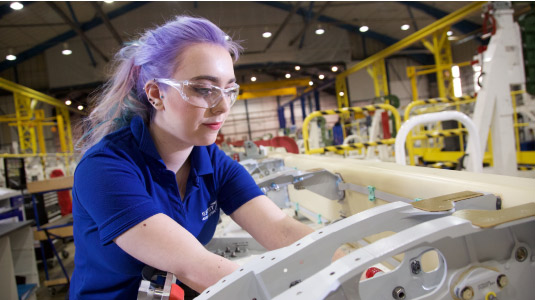SFC news published since 2018. See SFC archived content for earlier news articles.
Douglas Morrison reports on a project investigating why the gender imbalance in STEM jobs persists, and new ways of working with employers to address it.


On the 18 October 2019, the City of Glasgow College and Equate Scotland will welcome experts from across Europe to share the findings of our ERASMUS+ funded ENGENDERING STEM project. Over the last two years the project has sought to bring clarity to a range of factors influencing the under-representation of women in the STEM labour market and has delivered a number of outputs which are now freely available to those with an interest in the STEM labour market, education and equality. You can find out more about the project by watching this short video.
Why is this a problem?
The gender imbalance within the STEM sector almost needs no introduction. We are experiencing a sustained under-representation of women, particularly in technical roles, and progress towards proportional representation has been glacial. The under-representation becomes even more stark when considering the workforce demographic within small to medium enterprises (SMEs) which are often family run, adopt informal working practices and haven’t traditionally engaged in workforce diversification programmes. The manifestation of under investment in workplace inclusivity and workforce diversity can be further evidenced in the gender pay gap, higher levels of attrition amongst female employees and established, and widening, skills gaps throughout the STEM sector.
The ENGENDERING STEM team have been working with employers in the SME community to better understand how their businesses are run and to support them in considering impactful strategies and interventions that can improve their practices. We have found that many of the more progressive companies tend to invest in high profile: low impact activities such as hosting a one off event for girls at a local school. These events have a degree of value but tend not to represent a long term return on investment for the company and don’t offer any meaningful long term impact for the participants.
We have been keen to understand the ways in which SMEs have adopted low cost interventions that have had a high impact on their ability to attract, retain and support the long-term development of women in their businesses. It will come as no surprise that many of the low cost interventions which have demonstrated value for female employees, such as flexible working, remote working, transparent salary scales, inclusive recruitment language, recruitment of women in senior and board roles etc, actually represent value for all employees.
You can find out more about the good practice being adopted by STEM SME’s in our best practice guide.
So why don’t all companies adopt these practices? Our team have been able to identify over 200 barriers to women’s participation in the STEM labour market. We have worked with employers to emphasise the business, legal and moral cases for diversity and have supported them to consider the extent to which their own workplace practices are inclusive, employee focused and consistent with the good practice we have found in similar companies.
The most common feedback we have received from employers is that they find the equalities landscape cluttered and difficult to understand. They often choose not to introduce positive strategies through fear that they will get something wrong and find themselves facing some form of legal challenge. Less progressive companies are entirely resistant to diversifying their workforce through concerns relating to perceived expense of accommodating women in the business, the complexity of managing alternative working patterns or a desire to maintain the cultural status quo.
What have we done?
It is clear that there is a high degree of variability between individual employers, companies of different sizes and within specific sub-industries of the STEM sector. Our Employer Self-Assessment Tool (eSAT) enables companies to carry out individualised assessments of workplace inclusivity and generate custom, company specific reports which signpost potential ways of improving. This free-to-use tool has been well received by the community with a number of companies now implementing strategies which have been suggested based on their existing workplace practices.
We have also sought to bring clarity to the key concepts, terminology and ideas relating to gender equality in the workplace through our free-to-access online training programme. This course is aimed at those with little or no knowledge of gender equality issues and aims to support employers to be bold on gender equality and to develop positive recruitment, retention & progression practices.
How can you get involved?
Our upcoming conference, held in Edinburgh on 18 October, will share the initiatives developed by the project team in more detail and will present the best practice from employers who are experiencing the benefits of investing in diversity. The conference includes access to best practice guides, case studies, free online resources and self-assessment toolkit. Participants will hear from SMEs across Europe and they will have the opportunity to network and to be part of discussions through sessions led by our panel of experts. Those interested in attending the conference can sign up on Eventbrite.
The project is co-funded by the ERASMUS+ programme of the European Union and is delivered in partnership between City of Glasgow College, Equate Scotland, VHTO (Netherlands) and Miguel Altuna (Spain).
Douglas Morrison is the Associate Director of Innovation and STEM at City of Glasgow College, Director of the Scottish Institute for Innovation and Knowledge Exchange, and the Project Sponsor of ENGENDERING STEM. He can be contacted at douglas.morrison@cityofglasgowcollege.ac.uk or on Twitter @dmorrisonedu.

